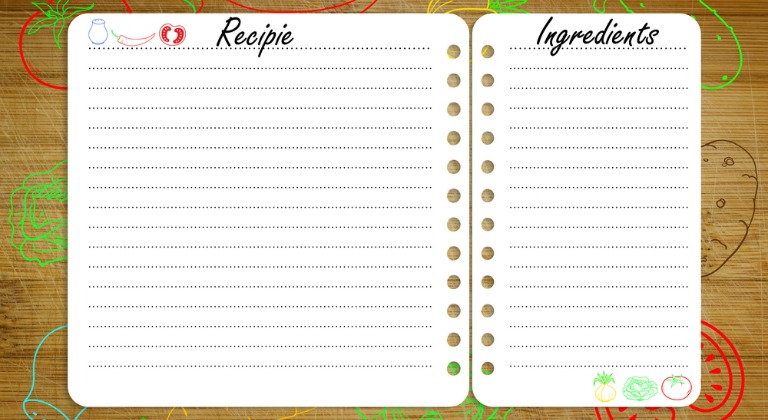Writing a Cookbook - Starting With How to Write Recipes

My Recipe Library
I love to cook, and every week, I make at least one recipe I’ve never made before. This means I’ve seen a lot of really helpful and not-so-helpful recipes from traditional cookbooks, cooking blogs, and everything in between. Writing a cookbook (or even a food blog) might seem easy. After all, you just want to write about food—something we all enjoy—and share some delicious recipes, along with delectable pictures of the gorgeous food you’ve created. What could be simpler?
A lot of things, as it turns out, so this is the first in a series of three articles sharing my top tips for creating a truly reader-friendly cookbook. In this first article, we’re going to cover how to create a genuinely helpful ingredients list. As we get started, it’s important to remember that cookbooks are technical manuals, explaining to the reader how to combine and transform simple ingredients into mouthwatering experiences. That means that as cookbooks (like all other technical manuals) should strive to break down complicated activities into easy-to-follow steps.
The first part of making a complex job simple is to have a clear list of the necessary supplies. In the case of a cookbook, that means the ingredients. Readers need consistent, correct, and specific information regarding kind, type, and measurement—including equivalencies, weight/volume, and totals.

- Abbreviations: Always be consistent. For example, for teaspoons and tablespoons, either:
- spell out teaspoon and tablespoon,
- use the abbreviations tsp and Tbsp, or
- use the abbreviations t and T.
- Equivalencies: If your ingredients list says, “1 tablespoon minced onion OR 1 tablespoon onion powder,” it’s probably not right. It should probably say, “1 tablespoon minced onion OR 1 teaspoon onion powder.”
- Weight/volume: It’s always best to specify (even if you think it’s unnecessary) instead of leaving your reader confused.
- If the size of an ingredient package is important, provide the weight or measurement.
○ Does “1 large can tomato sauce” mean 16 or 32 ounces?
○ Does “1 bag frozen peas” mean 12 or 16 ounces?
- Always be sure to provide the best measurement for your ingredients’ form. Generally:
○ liquid = volume
○ dry = weight or volume
- Kind/Form: If various kinds or forms of an ingredient exist, be sure to specify which you mean.
- Does “12 tortillas” mean flour tortillas or corn? Does it mean 6-, 8-, or 10-inch tortillas? Is it up to the cook to choose?
- Does “6 ounces chocolate, grated” mean bittersweet, unsweetened, semisweet, dark, milk, or even white chocolate?
- Does “1/2 cup cheddar cheese” or “2 ounces cheddar cheese” mean shredded, cubed, or sliced?
- Totals: Be sure to include the total needed in the ingredients list, even if the ingredient is split across multiple steps:
- 1/2 cup + 1/4 cup olive oil or
- 3/4 cup olive oil, divided
Next, remember that the leaves of c:
- 1 teaspoon dried rosemary leaves
- 1 sprig fresh rosemary
- 1 teaspoon dried OR 1 fresh sprig rosemary
Finally, always list ingredients in the order in which they are used. As Denise Landis, in an article for The Cook’s Cook, reminds us:
To do otherwise is sloppy—and, from a professional standpoint, unacceptable. Listing ingredients in the order used allows the busy cook to follow the recipe in a progression from top to bottom. It’s efficient and makes perfect sense. …
There are many ways in which to present a recipe. … But one fixed and unvariable rule of professional recipe editing is that all ingredients must be listed, always, in the order that they are used.2
Clearly, there are several things to keep in mind when crafting an ingredients list for a recipe, but they all boil down to one simple rule: Keep the text as simple and clear as possible. Having the ingredients list in good form sets a solid stage for the next aspect of the recipe: the instructions. We’ll cover that topic in our next article. Until then, bon appétit!
Notes
1 I speak from experience!